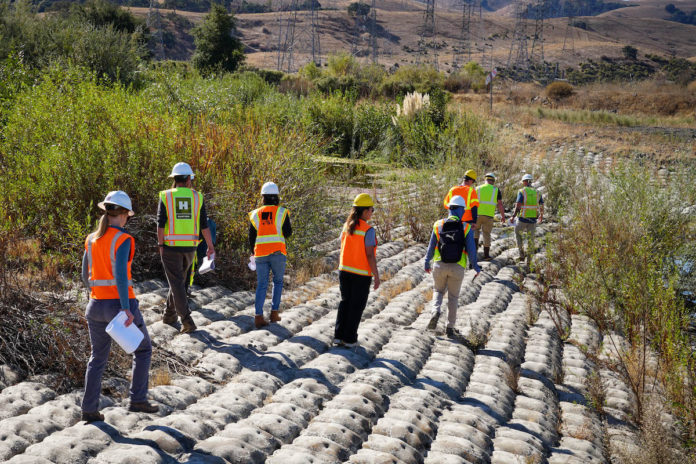A collective cheer is in the air as many environmentalists, wildlife enthusiasts, Alameda County officials and residents celebrate news that funding to remove the last man-made barrier to fish passage in Alameda Creek has been secured.
Claire Buchanan, Bay Area Senior Project Manager for California Trout (CalTrout), a non-profit agency focused on ensuring healthy waters and resilient fish populations in the state, said a new $4.3 million grant will be used to lower a PG&E gas pipeline that spans the creek about 12 miles upstream from the creek’s terminus into the bay. Known as the Sunol Valley Fish Passage Project, it is the last of 16 fish passage projects in the Alameda Creek watershed completed in the last 20 years.
Urbanization in the lower 12 miles of the creek in the Fremont area has choked portions, preventing native Chinook salmon and steelhead from traveling to upstream watersheds to spawn. Previous large fish passage projects on the creek include the installation of fish ladders at the Fremont BART station weir and at the inflatable bladder dams near Niles, both done by the Alameda County Water District (ACWD).
Years of preparation
“This project has been in the works in some way shape or form since about 2012,” Buchanan said, adding that the grant is from NOAA Fisheries, a federal agency focused on natural resource conservation. “We at CalTrout only got involved in July of last year when the project was already at 65% design,” Buchanan noted. As lead agency on this latest project CalTrout was tasked with coordinating the efforts of other project partners and for navigating permit processes and lining up grant applications. The grant came through in October.
In addition to ACWD, other partners on the project working under the umbrella of Alameda Creek Fisheries Work Group, include Alameda Creek Alliance, Alameda County Flood Control & Water Conservation District, California Department of Fish and Wildlife, San Francisco Public Utilities Commission, Zone 7 Water District, Alameda County Resource Conservation District, Trout Unlimited and the National Marine Fisheries Service.
Alameda Creek flows from Packard Ridge in the Diablo Range east of San Jose, for about 40 miles until it reaches Fremont where the lower 12 miles of creek are guided through a flood control channel into San Francisco Bay. The upper watershed is more untouched by development and suitable for fish spawning.
Sinking the pipeline
The PG&E pipeline, built in 1963, spans the creek near the Highway 680 overpass in Sunol Valley and is topped by an erosion control apron built from concrete and rock that protrudes above the water. This creates a barrier preventing salmon, lamprey and other anadromous fish—which spend part of their lives in both fresh and salt water—from easily reaching the upper watershed.
Work on the project will start in June 2025 when fish traffic is lower and continue through October. The project will sink the pipeline between 17 and 20 feet below the creek level and remove the erosion control apron to allow easier passage to upper portions of Alameda Creek.
While PG&E is paying the lion’s share of work to move the pipeline, additional funding was needed for supplemental work to complete the project. Buchanan said the last chunk of cash—the $4.3 million grant—is dedicated to revegetation and regrading after the PG&E work is done.
A healthy ecosystem
Jeff Miller, Founder and Director of Alameda Creek Alliance (ACA), a non-profit group dedicated to bringing salmon and steelhead back to Alameda Creek applauded the latest development. “Salmon and steelhead, even though they live in the creek, are tied to everything that happens in the entire watershed because anything that happens in urban development like roads or pollution that comes into the creek or land management upstream is all eventually going to impact the stream and fish habitat.”
In the late 1990s the Central California Coast population of steelhead trout was listed as a threatened species under the federal Endangered Species Act, and salmonid populations were declining across the state. This prompted Miller’s efforts to form ACA and push public agencies into partnership and action to help clear fish barriers on Alameda Creek.
Because much of the Bay Area’s water supply flows through Sunol Valley from Hetch Hetchy reservoir in the Sierra Nevada mountains, the waterway in Alameda Creek is crucial to public health. Additionally, the creek flows near the backyards of hundreds of residents who also may be impacted by pollution, ecological changes or development near the creek.
“It’s good to remind people that anadromous fish are a good ecosystem indicator,” Buchanan said. “If you have salmon and steelhead in your backyard, it’s a great indication that you are living in a good and healthy ecosystem.”




